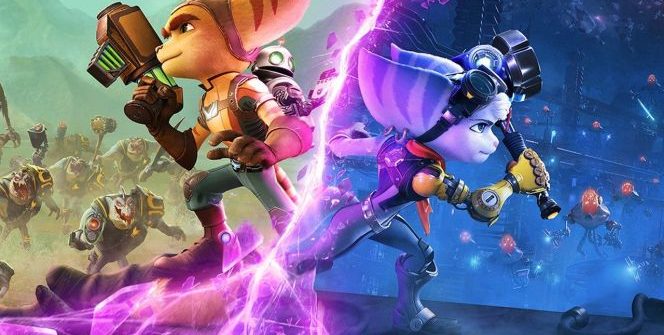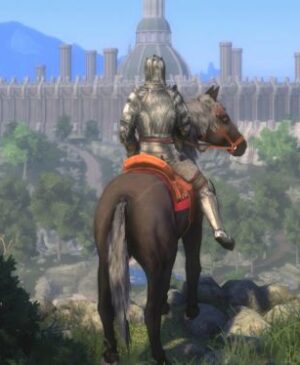Generally speaking, developers, especially those working for large companies, avoid attacking each other’s work and/or statements head-on. It is not considered professional and, after all, you don’t know what tomorrow will bring. For the co-founder of Traveller’s Tales, such considerations are clearly no longer important.
Jon Burton, the co-founder of the studio now known as TT Games (best known for its LEGO and Disney games in the 1990s), has maintained a YouTube channel for several years called “Coding Secrets” in which he discusses and explains the creation of the games he has worked on (it was via YouTube that he revealed a prototype of Mickey Mania 2, for example). But not only that.
Indeed, he also looks at titles developed by other studios. And in one of his latest videos, relayed by the British site VGC, the game designer looked at the case of Ratchet & Clank: Rift Apart and Insomniac Games’ statements about the game. When the game was announced, Sony’s Californian studio claimed that the near-instantaneous world-swapping via a portal seen in Ratchet & Clank: Rift Apart was enabled by the PS5’s SSD and was simply impossible to implement on previous consoles.
In his video, Jon Burton states outright that this is not true and that Insomniac Games’ statements about it are “misleading.” Given the way these portals/rifts are used in the PS5 exclusive, he says a similar rendering could have been achieved on older machines including the PS3.
For him, what was presented as “amazing sequences showing Ratchet moving from one world to another in a way that creates great action scenes” was “mostly just cutscenes or short sequences with very limited gameplay.” While he doesn’t deny that Insomniac did use the PS5’s SSD to achieve these techniques, he does believe that equivalent scenes could have been produced on older consoles using other techniques.
For example, the director of LEGO Marvel’s Avengers states that the pocket dimensions seen in Ratchet & Clank would be the easiest to reproduce on older consoles as they correspond to small levels with relatively basic scenery:
“Pocket dimensions are really basic graphically and in effect only seem to use the same generic objects like crates, objects that would already be available in RAM anyway. So it’s more or less a question of a dome, some small platforms, generic objects and some nice lighting. On older hardware, this wouldn’t require much memory, especially since these sequences use generic objects, which makes the whole thing quicker to load.”
Exaggerated reality?
As for the more spectacular scenes in which Ratchet switches worlds by passing through a succession of portals, Jon Burton points out that what actually happens in these scenes is relatively limited and that their context makes this system replicable on previous consoles by cleverly using the memory buffer:
The important thing to note here is that nothing that happens at this point in the game is optional. Everything is forced. This is an important detail because it means that you can pre-load the track section while you play the previous section.
By the way, every section in this sequence is both forced and small. You only move around a very small part of the world and you have very few movement options during that section. This means that the game has all the time in the world while you play one section to load the next. Imagine that the game has two memory buffers. The first buffer contains the section you are currently playing. And while you are playing it, the game loads the next section into the second buffer.
As a transition between the buffers, you can have very simple intermediate gaps permanently stored in memory to hide any bugs that may occur during the scene swap.
To illustrate his point, Jon Burton takes the example of a sequence in the PS3 version of LEGO Star Wars III that he designed in which two different levels are displayed on the screen at the same time and between which the player can switch whenever he wants. According to him, having both sequences fully visible at the same time at all times is an even more difficult result to achieve than what Insomniac did with the rifts in Ratchet & Clank: Rift Apart. He ends by claiming that what is shown in terms of near-instantaneous level switching in the PS5 game could have been achieved on “more or less any console of the last decade.”
It’s worth pointing out in closing that Jon Burton is only talking about the way Insomniac has exploited the rift system in Ratchet & Clank: Rift Apart, not the game’s execution as a whole. Indeed, it’s hard to imagine a PS3 displaying graphics identical to those seen in the PS5 exclusive. Whatever the case, it’s a safe bet that this video from Jon Burton will be the talk of the town. And it’s possible to wonder if it will get a response from Insomniac.
What do you think of Jon Burton’s statements and explanations? Do you agree that Insomniac has oversold what the rifts offer in terms of gameplay experience? Do you think similar sequences could have been offered on PS3? Give us your opinion in the comments below.
















Leave a Reply